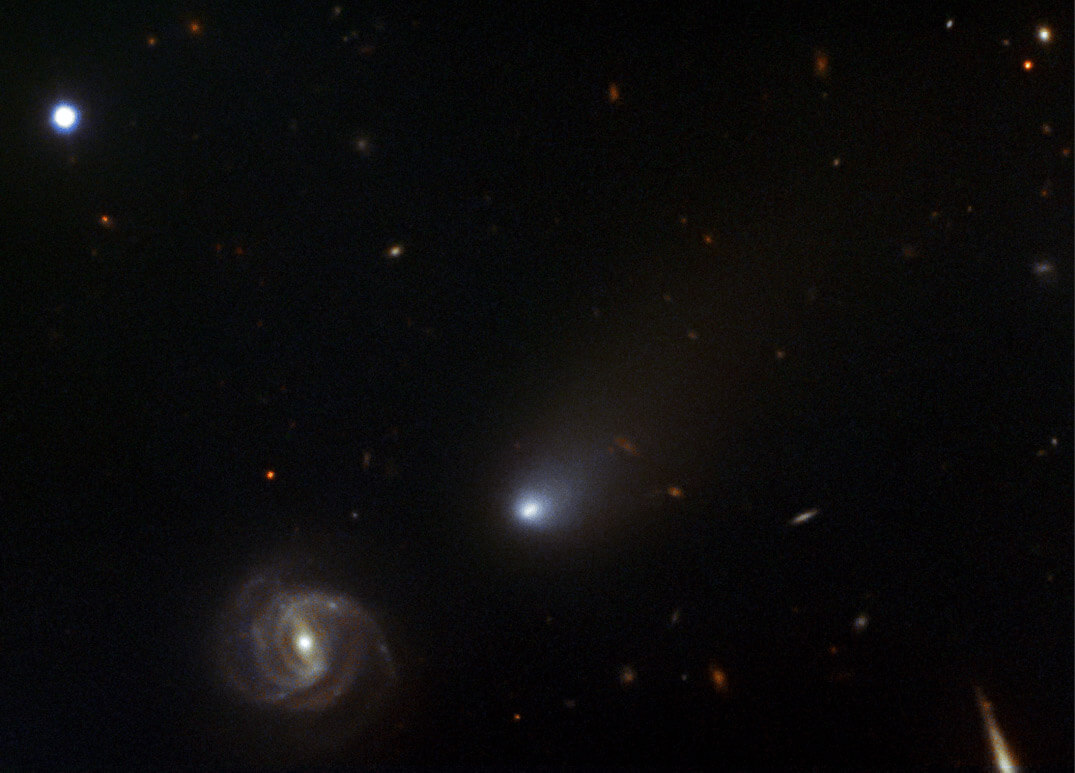A New Era for Interstellar Objects with LSST
Interstellar objects are transient visitors to our Solar System on unbound hyperbolic orbits. These small planetoids formed around other stars and were subsequently ejected from their planetary system of origin. Since then, these planetesimals have been roaming the Milky Way until encountering our Solar System and possibly other planetary systems along the way. Even with the best telescopes and adaptive optics systems, we can’t yet resolve individual planetesimals orbiting stars outside our Solar System. There have been observations of planet forming discs and debris discs which serve as probes of the ensemble properties of extrasolar planetesimals, but the passage of an interstellar planetesimal close to Earth provides a rare opportunity to study these individual relics of planet formation up close in the same ways in which we probe the small body populations residing within our Solar System.
In 2017, 1I/ Oumuamua was the first confirmed interstellar object discovered. Nearly two years later, interstellar comet 2I/Borisov was discovered (see Figure 1 below). LSST is expected to discover at least one interstellar object per year during a ten-year period. The community follow-up of LSST interstellar object discoveries is going to revolutionize our understanding of how planetary systems are put together. With optical and near infrared imaging and spectroscopy of each interstellar object discovered by LSST, astronomers can probe the sizes, shapes, and compositions of these rouge planetesimals. Each object samples a different planetary system that was built within the Milky Way. LSST interstellar object discoveries will enable astronomers, from the comfort of Earth, to probe the variety of bodies produced during planet formation within our Galaxy and compare to the planetesimals that are left over from the construction of our Solar System.
 Figure 1: Gemini North telescope image of the comet C/2019 Q4 (Comet Borisov) obtained on the night of November 11-12, 2019. The image was captured by the Gemini Multi-Object Spectrograph (GMOS) using three filters in optical light. Because the comet’s motion is relatively rapid, the three images were combined by averaging the position of the comet in the images to produce the single color composite shown here. (Credit: Gemini Observatory/NSF’s National Optical-Infrared Astronomy Research Laboratory/AURA)
Figure 1: Gemini North telescope image of the comet C/2019 Q4 (Comet Borisov) obtained on the night of November 11-12, 2019. The image was captured by the Gemini Multi-Object Spectrograph (GMOS) using three filters in optical light. Because the comet’s motion is relatively rapid, the three images were combined by averaging the position of the comet in the images to produce the single color composite shown here. (Credit: Gemini Observatory/NSF’s National Optical-Infrared Astronomy Research Laboratory/AURA)